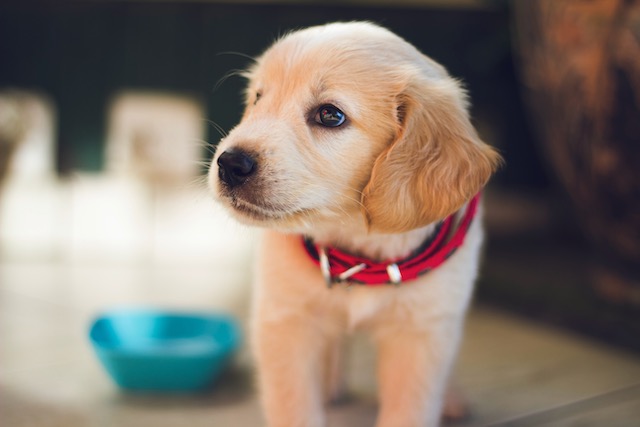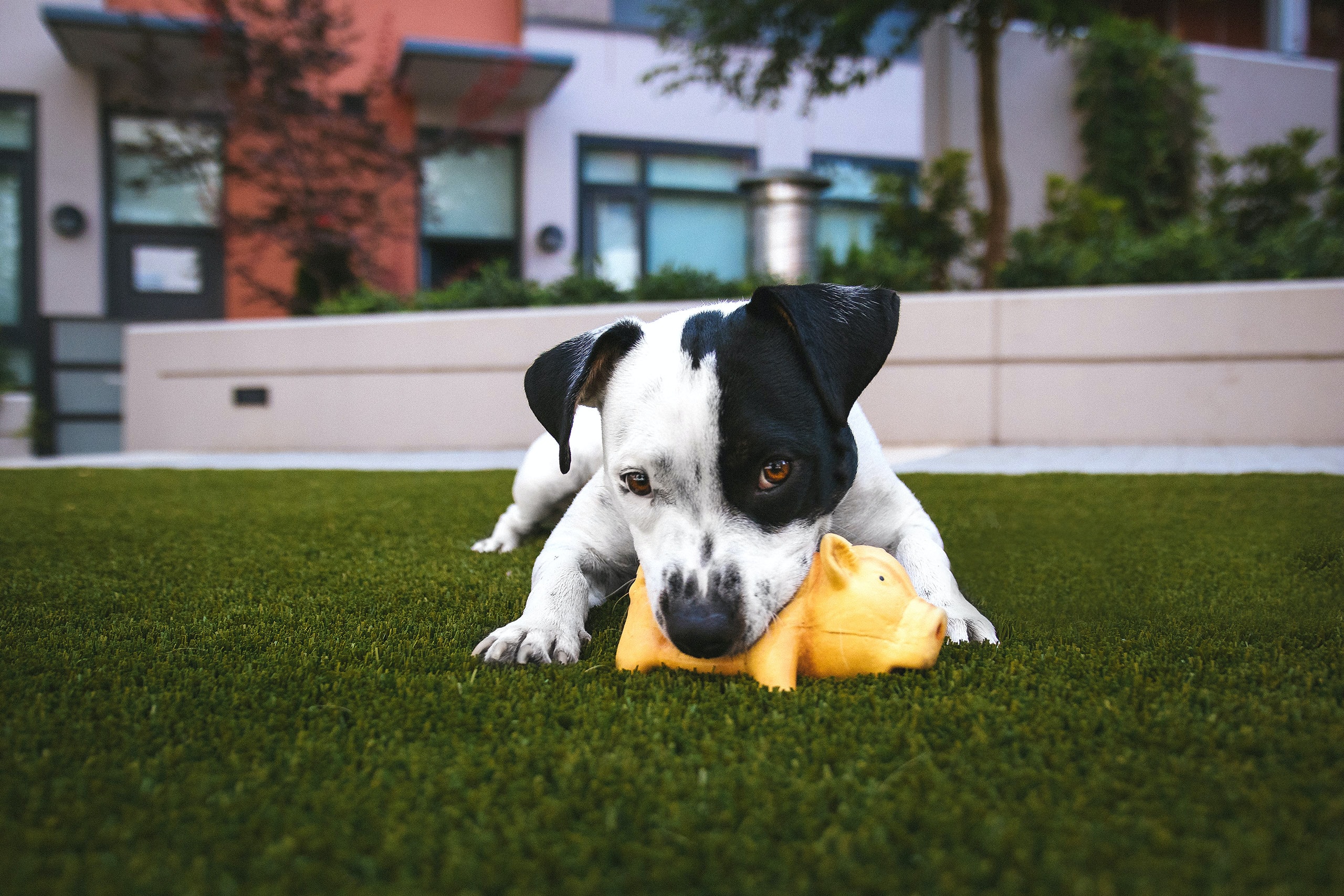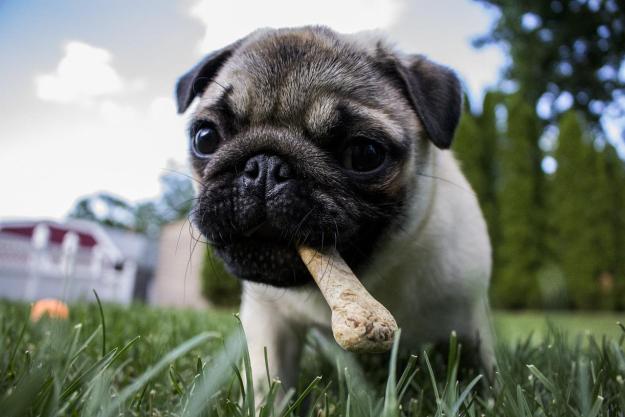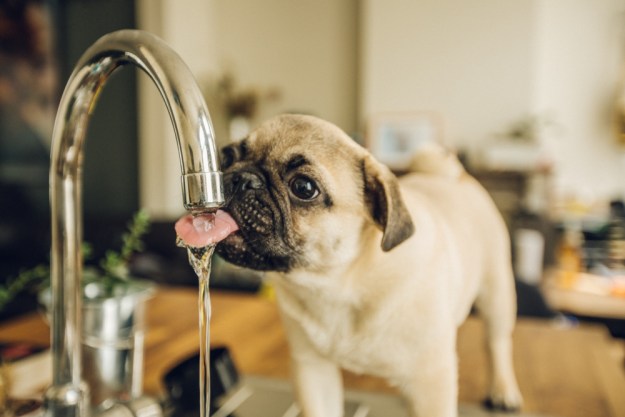The similarities between babies and puppies are endless. They have round bellies, adorable tiny features, and most of all, they love to get into everything! Here are some basics to start you and your puppy off on the right paw, and if you want to know more, you can check our different ways on how to puppy proof an apartment.

- Keep your floors clean: Without hands to grasp, dogs use their mouths to investigate the world around them. This means anything left on the floor is at risk of being chewed. To ensure your pup doesn’t get hurt or ruin something of value, move everything off the floor and out of reach.
- Hide or cover up wires and cords: Everything has a cord or wire now, and these tempting strings can potentially harm your puppy if she chews on them. Organizing and hiding cords is essential to keeping your puppy and your electronics safe.
- Keep kibble out of reach: Being curious little creatures, puppies are likely to find the bag of food and rip into it, resulting in a mess for you and a tummy ache for them. Invest in a food container that can be locked and kept out of reach.
- Baby gates everywhere: Whether you’re leaving for brunch with friends or need a relaxing minute away from your puppy, a baby gate is an excellent way to contain your puppy without putting her in a crate.
- Provide safe space: Crate training is one of the most beneficial things you can do for your puppy. Providing her with a safe place to go when she feels overwhelmed or scared can improve your puppy’s well-being. It’s also a great training tool!
- Covered trash cans: Similar to hiding their food, keeping puppies out of delicious-smelling trash is vital for their health. Your pup doesn’t know what’s good or bad for her and can end up eating something dangerous or cause a huge mess. Invest in a covered trash can.
- Remove toxic houseplants: While houseplants keep our spaces feeling fresh and beautiful, some of them can be toxic for our furry friends. If you have houseplants already or are planning to get some, be sure to research which ones are harmful to pets.
- Chew toys for alone time: When you’re out and about and your puppy is home alone, avoid a catastrophic mess by providing her with lots of toys that promote engagement. Like babies, puppies go through painful teething and will feel the need to chew. Giving them toys they can safely chew will allow you to relax, knowing they can relieve that pain without ruining your furniture.

8 tips for puppy apartment life
- Puppy pads: When your home is many floors up, potty training can be difficult. An 8-week-old puppy needs to go potty every hour, which can demand a lot of time and energy from you — not to mention repeated walks down several flights of stairs when it’s not convenient. A puppy pad can be a great way to potty-train without going all the way outside every time.
- Exercise: Because apartments offer limited space, it’s important to exercise your puppy regularly. Pent-up energy turns into mischief and will result in an unhappy puppy and parent.
- Apartment breeds: While many breeds could adapt to apartment life, it’s best to research which breeds will love it. High-energy or large-breed dogs are probably not a good choice for the tight quarters of apartment living. However, many other breeds would love nothing more than to lounge on the couch or take only short walks.
- Unattended puppy: Even if you work from home, eventually your puppy will be home alone. It’s critical to plan for this beforehand. Know where she will be, what she will have access to, and what she will need (toys, water, puppy pad) — this way, you and your pup will know what to expect when you have to run for groceries.
- Routine, routine, routine: Nothing makes a puppy feel calmer or safer than a routine. When they know what to expect and when to expect it, they can remain calm and won’t get overstimulated. Feeding times, walks, and training will work better when done at the same time every day.
- Unique and durable toys: Of course a basket full of plush toys is adorable, but dogs want to chew and think. This durable and engaging toy will give your pet something to do while you’re gone or watching TV.
- Daily training: Besides teaching your puppy to be a good citizen, training provides your dog with exercise and mental stimulation to avoid destructive chewing and acting out.
- Doggy day care: If you have a 9-to-5 job, your pup will have a lot of alone time. Consider sending her to doggy day care for socialization and physical and mental health while you’re at work. Whether it’s every day or just a few times a week, it can be a great way to allow your pup to play and have fun while you’re at work.
Getting a puppy is an exciting time! Use these puppy proofing tips and tricks to ensure your pet stays safe and won’t cause unnecessary destruction in your home.
Editors' Recommendations
- 5 surefire ways to keep your dog off your bed and get a good night’s sleep
- How hot does concrete get in the sun? The answer might shock you
- What is the best food for older dogs? These 6 vet-approved kibbles and canned foods won’t steer you wrong
- Where to put a dog crate in your house depends on these important factors
- Is your dog’s breathing problems old age or something else? What to know



